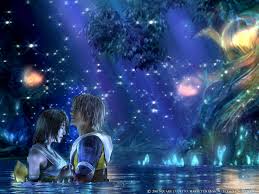Computer Wallpapers Free Biography
Sydney is the most populous city in Australia and the state capital of New South Wales. It is located on Australia's south-east coast of the Tasman Sea. As of June 2010, the greater metropolitan area had an approximate population of 4.6 million people. Inhabitants of Sydney are called Sydneysiders, comprising a cosmopolitan and international population.
The site of the first British colony in Australia, Sydney was established in 1788 at Sydney Cove by Arthur Phillip, commodore of the First Fleet as a penal colony.[5] The city is built on hills surrounding Port Jackson which is commonly known as Sydney Harbour, where the iconic Sydney Opera House and the Harbour Bridge feature prominently. The hinterland of the metropolitan area is surrounded by national parks, and the coastal regions feature many bays, rivers, inlets and beaches including the famous Bondi Beach and Manly Beach. Within the city are many notable parks, including Hyde Park and the Royal Botanic Gardens.
Sydney often ranks highly in various world cities rankings. It has hosted major international sporting events, including the 1938 British Empire Games and the 2000 Summer Olympics. The main airport serving Sydney is Sydney Airport[6] and the main port in the city is Sydney Harbour.
Radio carbon dating suggests that the Sydney region has been inhabited by indigenous Australians for at least 30,000 years.
The traditional indigenous inhabitants of Sydney Cove are the Cadigal people, whose land once stretched from south of Port Jackson to Petersham.While estimates of the population numbers prior to the arrival of the First Fleet in 1788 remains contentious, approximately 4,000–8,000 Aboriginal people lived in the Sydney region prior to contact with British settlers. The British called the indigenous people the "Eora",because being asked where they came from, these people would answer: "Eora", meaning "here", or "from this place" in their language.[8] There were three language groups in the Sydney region, which were divided into dialects spoken by smaller clans. The principal languages were Darug (the Cadigal, original inhabitants of the City of Sydney, spoke a coastal dialect of Darug), Dharawal and Guringai. Each clan had a territory, the location of each territory determined the resources available. Although urbanisation has destroyed much evidence of these settlements (such as shell middens), a number of Sydney rock engravings, carvings and rock art remain visible in the Hawkesbury sandstone of the Sydney basin.
In 1770, British sea captain Lieutenant James Cook landed in Botany Bay on the Kurnell Peninsula. It is here that Cook made first contact with an Aboriginal community known as the Gweagal.[11] Under instruction from the British government, a convict settlement was founded by Arthur Phillip, who arrived at Botany Bay with a fleet of 11 ships on 18 January 1788. This site was soon determined to be unsuitable for habitation, owing to poor soil and a lack of reliable fresh water. Phillip subsequently founded the colony one inlet further up the coast, at Sydney Cove on Port Jackson on 26 January 1788. However the official proclamation of the founding and naming of Sydney took place only on 7 February 1788 when he named it after the British Home Secretary, Thomas Townshend, Lord Sydney, in recognition of Sydney's role in issuing the charter authorising Phillip to establish a colony. The original name was intended to be Albion until Phillip decided upon Sydney.
In April 1789, shortly after the arrival in Botany Bay of the French expedition led by La Perouse, a catastrophic epidemic disease—thought to be smallpox—spread through the Eora people and surrounding groups, with the result that local Aborigines died in their thousands, and bodies could often be seen bobbing in the water in Sydney Harbour.The cause of the epidemic has always been a matter of speculation and controversy, introduction by the British being among the most likely explanations. In any event, the results were catastrophic for the Eora people and their kin and by the early 1800s the Aboriginal population of the Sydney basin "had been reduced to only 10 percent of the 1788 estimate",or an estimated 500 to 1000 Aboriginal people between Broken Bay and Botany Bay.








Sydney is the most populous city in Australia and the state capital of New South Wales. It is located on Australia's south-east coast of the Tasman Sea. As of June 2010, the greater metropolitan area had an approximate population of 4.6 million people. Inhabitants of Sydney are called Sydneysiders, comprising a cosmopolitan and international population.
The site of the first British colony in Australia, Sydney was established in 1788 at Sydney Cove by Arthur Phillip, commodore of the First Fleet as a penal colony.[5] The city is built on hills surrounding Port Jackson which is commonly known as Sydney Harbour, where the iconic Sydney Opera House and the Harbour Bridge feature prominently. The hinterland of the metropolitan area is surrounded by national parks, and the coastal regions feature many bays, rivers, inlets and beaches including the famous Bondi Beach and Manly Beach. Within the city are many notable parks, including Hyde Park and the Royal Botanic Gardens.
Sydney often ranks highly in various world cities rankings. It has hosted major international sporting events, including the 1938 British Empire Games and the 2000 Summer Olympics. The main airport serving Sydney is Sydney Airport[6] and the main port in the city is Sydney Harbour.
Radio carbon dating suggests that the Sydney region has been inhabited by indigenous Australians for at least 30,000 years.
The traditional indigenous inhabitants of Sydney Cove are the Cadigal people, whose land once stretched from south of Port Jackson to Petersham.While estimates of the population numbers prior to the arrival of the First Fleet in 1788 remains contentious, approximately 4,000–8,000 Aboriginal people lived in the Sydney region prior to contact with British settlers. The British called the indigenous people the "Eora",because being asked where they came from, these people would answer: "Eora", meaning "here", or "from this place" in their language.[8] There were three language groups in the Sydney region, which were divided into dialects spoken by smaller clans. The principal languages were Darug (the Cadigal, original inhabitants of the City of Sydney, spoke a coastal dialect of Darug), Dharawal and Guringai. Each clan had a territory, the location of each territory determined the resources available. Although urbanisation has destroyed much evidence of these settlements (such as shell middens), a number of Sydney rock engravings, carvings and rock art remain visible in the Hawkesbury sandstone of the Sydney basin.
In 1770, British sea captain Lieutenant James Cook landed in Botany Bay on the Kurnell Peninsula. It is here that Cook made first contact with an Aboriginal community known as the Gweagal.[11] Under instruction from the British government, a convict settlement was founded by Arthur Phillip, who arrived at Botany Bay with a fleet of 11 ships on 18 January 1788. This site was soon determined to be unsuitable for habitation, owing to poor soil and a lack of reliable fresh water. Phillip subsequently founded the colony one inlet further up the coast, at Sydney Cove on Port Jackson on 26 January 1788. However the official proclamation of the founding and naming of Sydney took place only on 7 February 1788 when he named it after the British Home Secretary, Thomas Townshend, Lord Sydney, in recognition of Sydney's role in issuing the charter authorising Phillip to establish a colony. The original name was intended to be Albion until Phillip decided upon Sydney.
In April 1789, shortly after the arrival in Botany Bay of the French expedition led by La Perouse, a catastrophic epidemic disease—thought to be smallpox—spread through the Eora people and surrounding groups, with the result that local Aborigines died in their thousands, and bodies could often be seen bobbing in the water in Sydney Harbour.The cause of the epidemic has always been a matter of speculation and controversy, introduction by the British being among the most likely explanations. In any event, the results were catastrophic for the Eora people and their kin and by the early 1800s the Aboriginal population of the Sydney basin "had been reduced to only 10 percent of the 1788 estimate",or an estimated 500 to 1000 Aboriginal people between Broken Bay and Botany Bay.
Computer Wallpapers Free

Computer Wallpapers Free

Computer Wallpapers Free
Computer Wallpapers Free
Computer Wallpapers Free
Computer Wallpapers Free
Computer Wallpapers Free
Computer Wallpapers Free

Computer Wallpapers Free
"Wallpaper Master" - Software That Keeps Your Desktop Wallpaper Fresh And New All The Time
Free Download Desktop Wallpaper
No comments:
Post a Comment